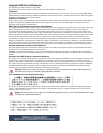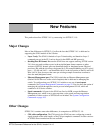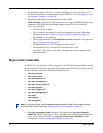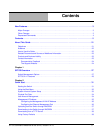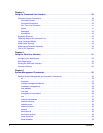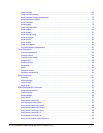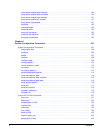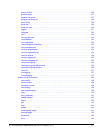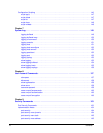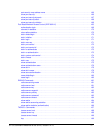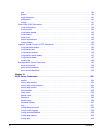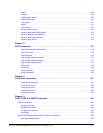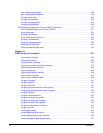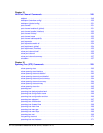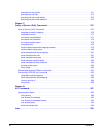
SFTOS Command Reference for the S2410, Version 2.4.1.0 3
This preface describes SFTOS 2.4.1 by contrasting it to SFTOS 2.3.1.9.
Major Changes
Most of the differences in SFTOS 2.4.1 reflect the fact that SFTOS 2.4.1 is dedicated to
supporting the S2410 models of the S-Series:
• Layer 2 only: The S2410 is limited to Layer 2 functionality, and therefore Layer 3
commands are not in the CLI, such as those for the OSPF and RIP protocols.
• Stacking/Port ID format: Because the S2410 does not support stacking, SFTOS version
2.4.1 does not need to address ports in the
unit/slot/port format common to other
versions of SFTOS. Instead, ports are identified simply in
slot/port format. Physical
ports have IDs with the slot always designated by 0, for example,
0/10 for port 10. Logical
ports — VLAN and LAG — are identified with a 1 in the slot portion of the ID, such as 1/
4 for LAG 4. Note, however, that some pre-existing example screenshots continue to
show the
unit/slot/port format.
• Ethernet Management port: The S2410 switch has an Ethernet Management port
(labeled 10/100 Ethernet on the switch faceplate) that is dedicated to managing the
switch. To configure that port, SFTOS 2.4.1 includes a new set of
serviceport
commands. See System Management Commands on page 55. You also have the option of
managing the switch through the console port and management VLAN, which are
common to all S-Series switches.
• Speed commands: All ports in the S2410 are fixed at 10GB, except the Ethernet
Management port, which is set to auto-negotiate, so the speed and auto-negotiation
commands in other versions of SFTOS are not included. See System Configuration
Commands on page 105.
Other Changes
SFTOS 2.4.1 contains some other differences, in comparison to SFTOS 2.3.1.9:
• CX4 cable configuration: The CX4 ports in the S2410 are auto-configuring to match
signal strength to the cable length, so the CX4 pre-emphasis commands in other versions
of SFTOS are not needed and are not available.
New Features




